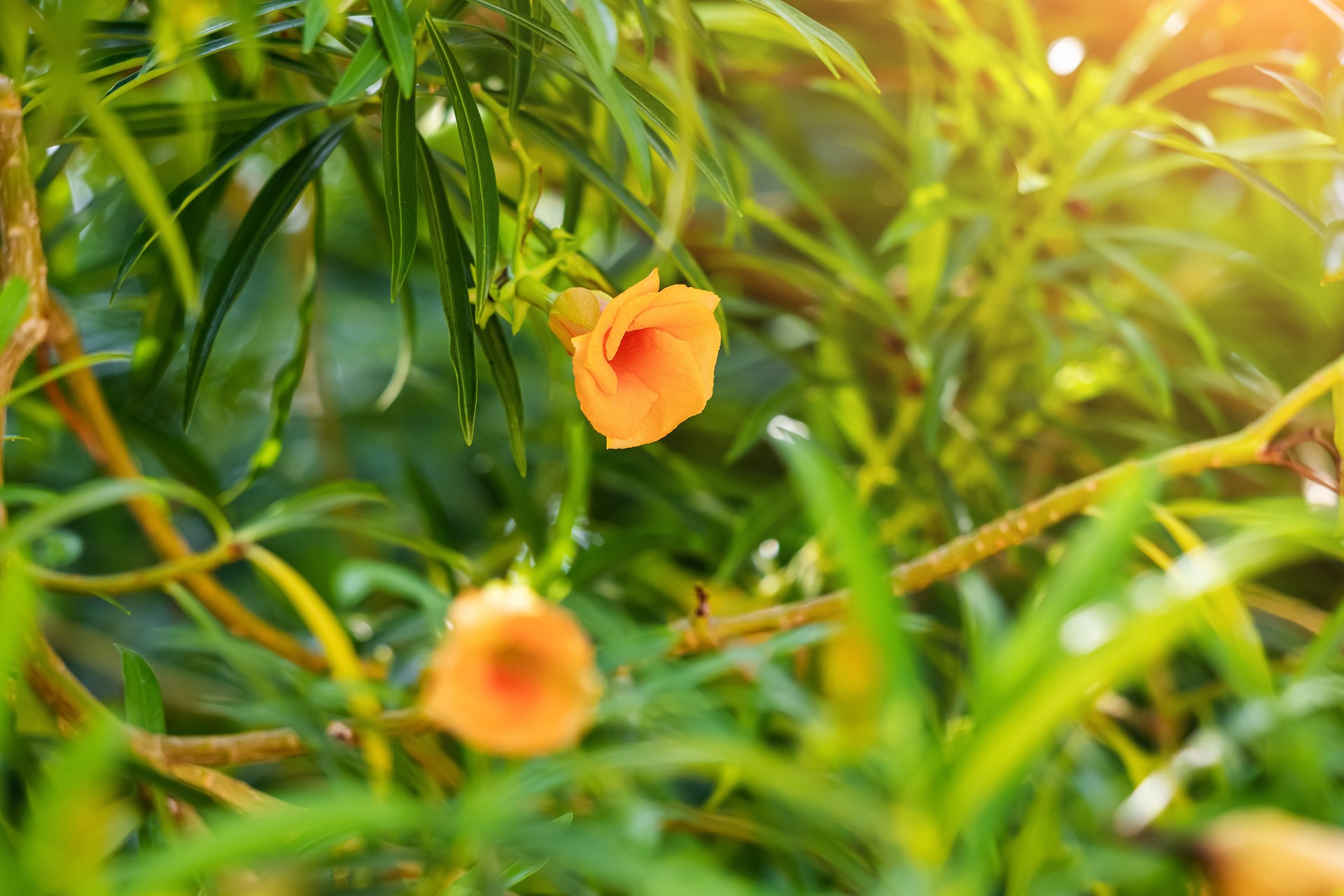

May is a big month in the tropics, typically bringing lots of welcome rain and pretty, colourful flowers. We are lucky in the tropics to have plants that flower year-round, but nothing quite compares to the fresh scents and dewy display of a garden after a fresh rain.
Typically, a plant will only have one common name in a specific region, usually in relation to its uses or general appearance. Sometimes, however, a plant will have more than one common name in the same region, which is the case with Cascabela thevetia. The nut from this tree is said to bring good fortune, and because of that, it is often referred to as the "lucky nut" tree. However, all parts of Cascabela thevetia are poisonous, which has also earned it the regional name "be-still tree" — because digesting it can cause you to be still ... physically.
In other places in the world, the tree is often called yellow oleander.
This tree has been widely studied for its medicinal qualities, as well as its ability to repel insects as a biological control.
Native to Mexico, Central America and tropical South America, this small, flowering tree is largely inconspicuous from a distance, but noteworthy once caught in the line of vision. Predominately grown as an ornamental, a lucky nut tree can reach heights of 25 feet in the right conditions and has a bushy rounded canopy. Preferring full sun and tolerating a bit of shade, it will accept a wide variety of growing conditions. In its native habitat, it can be found growing in savannas and riparian areas. Aside from its feathery presentation of evergreen, linear leaves, the flowers of the lucky nut tree are possibly why it is so memorable. Ranging from yellow, orange and peach, their funnel shape and radial arrangement are exceptional. The five petaled flowers last for only one day, opening in the morning and emitting a sweet fragrance, then closing in the evening.
When the initial fruit forms, it is green in colour, darkening to almost black when it becomes ripe. Inside of the ripe fruit is the seed which is sometimes referred to as the kernel.
Easily grown from seed, lucky nut can also be grown from cuttings and in some regions is even used as a live hedge.
In Camana Bay, Cascabela thevetia offers a sparkle of colour while passing through the six-leg roundabout. Rather than trying to spot it while driving, you can see it easily from the area in front of the Cayman MAC Store.
This article was originally published in the May/June 2022 print edition of Camana Bay Times.